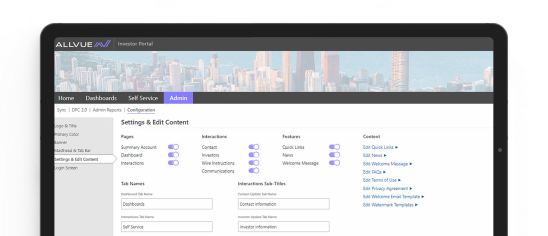
By: Michelle Wu
Head of Marketing
April 26, 2024
Multiple of Invested Capital, or MOIC for short, is one of the most common measures of performance in private equity (PE) investing.
MOIC tells investors in a very simple and direct way whether and by how much their original investment has grown. This makes it an important metric to understand, particularly in the private equity world, where the ultimate goal is to create value for investors through positive returns.
In this guide, you’ll learn everything you need to know about MOIC, including how it works, how to calculate it, and its main benefits and drawbacks.
What is MOIC?
MOIC measures the value generated by a private equity investment relative to the original amount invested. It’s also referred to sometimes as “cash-on-cash returned” or “multiple of money (MoM).”
At its core, MOIC helps answer one fundamental question: How many times have we multiplied the initial capital we invested? A MOIC value of 2x, for instance, says that a PE fund has doubled its original investment.
While MOIC alone is excellent for quickly assessing investment success, it’s typically calculated alongside other performance investment metrics — like the Internal Rate of Return (IRR) and the Public Market Equivalent (PME) — to provide a more holistic understanding of an investment’s performance.
Why does MOIC matter?
MOIC is important to private equity for several reasons.
First, MOIC helps PE firms determine if their current investment approach is working. A high MOIC can indicate an effective investment strategy, affirming the decisions of the firm’s general partners and reinforcing confidence in their investment acumen.
MOIC is also helpful in portfolio management. Calculating it at different stages of an investment’s lifecycle provides insights into how the investment is progressing. This can help portfolio managers detect underperforming assets early on, allowing for appropriate adjustments such as reallocating resources, shifting investment focus, or even divesting where necessary to safeguard overall portfolio health.
In addition, evaluating the MOIC of past investments allows PE firms to determine the potential value of similar future investments. It can also help them set realistic forecasts or benchmarks for such investments in the future.
Calculating MOIC in private equity
The formula to calculate MOIC is as follows:
MOIC = (Realized Value + Unrealized Value)/ Total Investment Amount
- Realized value is the sum of all cash flows from sold assets or exited investments. In other words, it’s all total financial benefits accrued by a PE firm from an investment during the ownership period.
- Unrealized value (also called residual value) represents the current market value of investments that are yet to be sold.
- Total investment amount is the initial capital invested in the venture.
Now, let’s put all this into context with an example:
Imagine a private equity firm is investing $10 million in a distressed company. The funds help turn things around, and the distressed entity actually starts to generate profits, some of which it shares with the PE firm in the form of dividends.
Let’s say that during the course of four years, the PE firm receives a total of $5 million in dividends (and other distributions). This amount represents the realized value.
Meanwhile, the PE’s stake in the business has now grown to $20 million over the four years. This figure is the unrealized value, i.e., the amount the PE could receive if it were to exit at its current market value fully.
From this scenario, we can calculate the MOIC of the investment as follows:
MOIC = $5 million+$20 million / $10 million = 2.5x
This means the PE firm’s original investment has grown by two and a half times.
MOIC vs. IRR: What’s the difference?
IRR is another popular performance metric in the private equity world. However, its approach to measuring the performance of an investment is quite different from that of MOIC. The most notable point of difference relates to the consideration of time.
More specifically, MOIC doesn’t take into account how long it takes to see a return. The MOIC of an investment that triples its value is the same whether it achieves it in two years or two decades. This lack of time consideration is indeed one of the main criticisms of MOIC as a performance metric.
IRR, on the other hand, is a time-weighted return. It incorporates the time value of money to calculate an investment’s performance on an annualized basis. While MOIC is expressed as multiple, IRR is usually presented as a percentage.
When to use these metrics
MOIC is most useful when you need a straightforward measure of the total growth of an investment, regardless of the duration. You can use it:
- In the early stages of investment analysis when you want a quick, clear understanding of return potential. Setting up a minimum MOIC expectation can help you quickly filter out less promising investments from your list of targets.
- When comparing investments with similar time horizons to determine which has a better return multiple.
- In strategic discussions with PE investors and other stakeholders who prefer a simpler metric for understanding investment performance.
On the other hand, IRR is useful when the time value of money and investment duration is important. Use IRR:
- To compare the efficiency of investments across different investment durations.
- When you need to consider the timing of cash flow into and out of the investment, such as when there are multiple funding rounds or irregular income streams.
- In more detailed financial analyses where understanding time-weighted returns can influence decisions on whether to continue, expand, or sell an investment.
That said, the best performance insights about an investment usually come from using MOIC and IRR together. Use the two metrics to get a more comprehensive, complete picture of investment performance.
Advantages and limitations of MOIC
Understanding the advantages and limitations of MOIC is essential to make informed decisions. Here, we’ll discuss both to help gauge its utility in assessing investment returns.
Advantages
It’s simple to calculate.
The most significant advantage of MOIC is that it’s easy to calculate. It doesn’t require complex financial modeling or assumptions about the future. This makes it easier to calculate for both experienced PE investors and those new to the field.
It offers a direct measure of value generation.
MOIC directly measures how much value an original investment has generated. It provides investors with a clear view of their investment’s total growth in absolute terms, which makes it relatively easy to understand.
It is versatile.
MOIC’s versatility is another significant advantage. It offers a consistent standard for comparing the performance of different investment types (including venture capital, private equity, and even real estate) across various sectors or geographies since the elements for its calculation remain the same.
Limitations
While MOIC has several compelling advantages, it does have some limitations. Here are a few that are worth keeping in mind.
It doesn’t consider investment duration.
The primary disadvantage of MOIC is that it doesn’t account for how long it takes to generate returns, which can be a critical factor in evaluating the efficiency of an investment. An investment might have a high MOIC, but if it took decades to achieve it, then it’s really not as impressive.
It ignores the timing of cash flow.
MOIC doesn’t provide any insights into the timing of cash flows. The latter is an important factor in the overall assessment of an investment’s attractiveness. Investments that generate quicker returns might be more desirable than those with delayed returns, even if the MOIC is the same due to the opportunity cost of capital.
Doesn’t accurately reflect risk and volatility.
MOIC doesn’t accurately reflect the risk associated with investments. A high MOIC could be the result of a high-risk investment that yielded positive returns by sheer luck. This element reiterates the importance of not solely relying on MOIC to evaluate an investment’s appeal.
What is a good MOIC?
There is no magic number, unfortunately.
What constitutes a good MOIC can vary depending on factors like investment strategy, sector or industry, and market conditions at the time of exit. It’s also important to note that what one private equity firm considers a good MOIC, another one might consider low or unacceptable.
Generally, a MOIC of greater than 1 indicates that an investment has generated a return that exceeds the original amount invested, which is inherently positive.
A MOIC of at least 2x is considered a solid benchmark for a successful investment in private equity. This means the investment has doubled the initial capital invested.
A MOIC of 3x and above, which indicates that the investment has tripled the initial capital or better, is considered excellent, mainly if it’s realized over a short to moderate timeframe.
On average, most private equity firms target a MOIC of between 2.5x and 3.5x.
Wrapping up: MOIC in private equity
Straightforward measures of performance and success are critical in the relatively fast-paced world of private equity. Stakeholders need a metric that can quickly convey the effectiveness of their investment strategies without getting lost in the details. MOIC offers precisely that — a snapshot of investment growth that is easy to calculate, understand, and communicate.
But as we’ve seen, MOIC has some limitations such as its disregard for the time value of money and its failure to account for risks. Therefore, MOIC is most effective when used in conjunction with other metrics like the IRR and PMR. This approach enables a more rounded understanding of an investment’s performance.
Calculate MOIC and IRR easily with Allvue Systems
If you’re looking for a solution that will help you get a greater understanding of your investment’s performance to empower you to make better decisions for the future and maximize value creation, look no further than Allvue Systems.
Our Portfolio Monitoring Software solution uses advanced cloud-based technologies to accurately calculate, track, analyze, and report on crucial private performance metrics like MOIC and IRR.
Get in touch with us today to learn more, or schedule a free demo.
Sources
Harvard Business School Online: How to Analyze Private Equity. Performance:https://online.hbs.edu/blog/post/private-equity-performance
Gompers, P., Kaplan, S.N., and Mukharlyamov, V. What do private equity firms say they do? https://www.hbs.edu/ris/Publication%20Files/15-081_9baffe73-8ec2-404f-9d62-ee0d825ca5b5.pdf
More About The Author

Michelle Wu
Head of Marketing
Michelle is a dynamic marketing leader with 15+ years of experience in capital markets, fintech, and cybersecurity technology industries. Prior to joining Allvue, Michelle was the Vice President of Product Marketing at SecurityScorecard, a global leader in cybersecurity ratings, and was the Head of Security & Compliance Marketing at Box. Before moving into cybersecurity, she led the Banking & Securities GTM strategy at Intralinks and covered capital markets clients at HSBC. She holds an MSc in Media & Communications from the London School of Economics and a BS in Marketing & Finance from NYU Stern School of Business.


